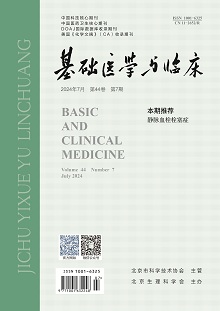1,25-dihydroxyvitamin D3 inhibits of TRPC6 expression in kidney of rat induced by puromycin aminonucleoside
2014, 34(5):
667-673.
 Asbtract
(
152 )
Asbtract
(
152 )
 PDF (2287KB)
(
346
)
Related Articles |
Metrics
PDF (2287KB)
(
346
)
Related Articles |
Metrics
Objective To evaluate Effect 1,25-dihydroxyvitamin D3 [1,25(OH)2D3]on TRPC6 expression in kidney of rat model in puromycin aminonucleoside nephropathy(PAN). Methods Thirty male Sprague-Dawley rats were randomly divided into three groups: PAN model group (Mon), 1,25(OH)2D3 treated group(Vit D) and normal control group (Con). Con and Vit D rat medols were constructed by consecutive three time intravenous injection PAN of 100 mg.kg-1 body weight every ten days and Vit D rats were gavaged 1,25(OH)2D3(0.2μ g.kg-1.d-1 ). The rats were sacrificed at one and three months respectively after PAN injection. 24-hour urinary protein excretion was determined. Renal Function and blood lipid were determined by an autoanalyzer. The renal tissue morphology was observed with PAS staining by light and electron microscope. The expression of nephrin, TRPC6 mRNA were evaluated by RT-PCR. The protein expression and location of nephrin and TRPC6 were decided by confocal microscope. Results PAN administration caused heavy proteinuria, hydroperitoneum, hyperlipoidemia, hypoproteinemia and as well as loss of renal function--a classics nephritic syndrome symptoms. Inflammatory cell infiltration, a devil of a protein cast, renal interstitial edema, partly renal tubule atrophy and fibrosis and focal segmental gloumerular sclerosis was obvious in pathology. 24h urinary protein[One month, (338±120)mg vs (669±142)mg, three months (432±83)mg vs (601±95) mg, P <0.01]; Index of gloumeruslocis in three months[(2.3±0.6)vs (3.4±0.4), P<0.01]and renal function[Cr(40.2±3.4)ummol/L vs(53.4±6.3)ummol/L, BUN(9.4±3.0)mmol/L vs(17.3±2.9)mmol/L, P <0.01]were significant lower in Vit D group compared with Mod group, but was not significant difference in blood fat. TRPC6 mRNA expression was increased and Nephrin mRNA expression were decreased in PAN rats model. Compared with Mod group rat, TRPC6 mRNA expression[1 month, (0.42±0.10)vs(0.75±0.14), three months (0.35±0.07) vs (0.68±0.10), P <0.01]were significant lower, and Nephrin mRNA[one month, (0.81±0.19) vs (0.33±0.09), three months(0.77±0.10)vs(0.44±0.10), P <0.01]were significant higher. Conclusions TRPC6 mRNA expression was increased and Nephrin mRNA expression were decreased in PAN rats model. The renoprotective of 1,25(OH)2D3 may be partly attributable to TRPC6 suppress.


